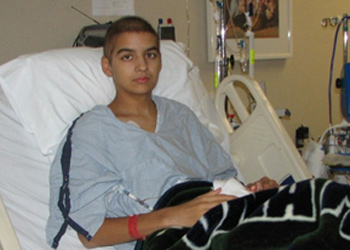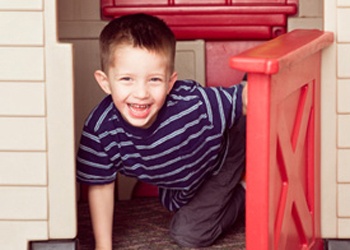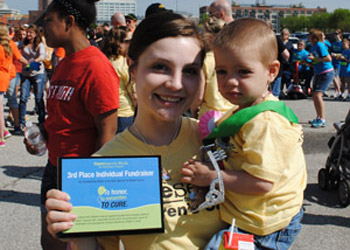Mom and childhood cancer advocate shares daughter’s story on anniversary of diagnosis
Fourteen years ago today, Stacy Distefano heard the words that more than 17,000 parents in the U.S. hear every year – “your child has cancer.”
On April 29, 2008, Stacy took her four-year-old daughter, Avery, to the pediatrician after weeks of stomach problems and complaints of a headache. Bloodwork showed that she was dehydrated, so Avery was sent to the ER for IV fluids.
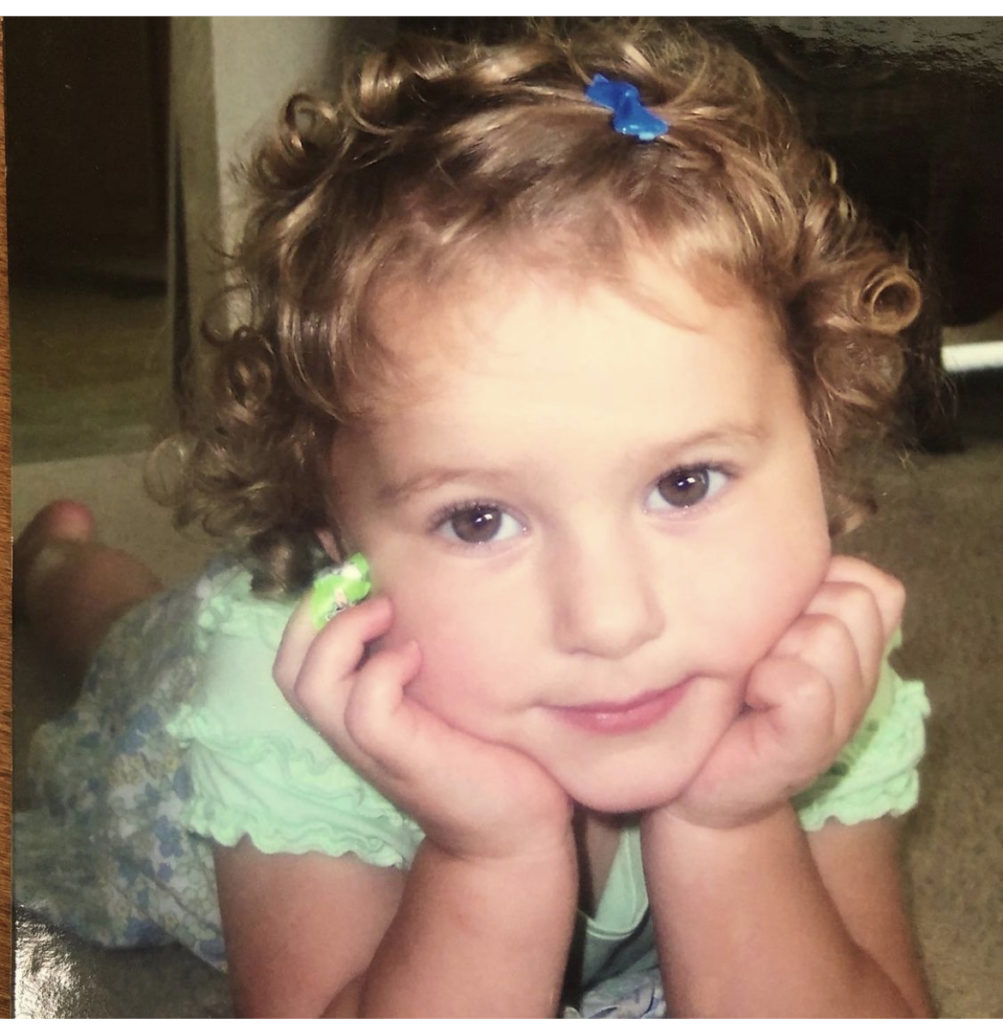
“The ER doctor ordered an MRI just to be safe,” said Stacy. “There’s no way I could’ve ever been prepared for what followed.”
Three Unthinkable Options
The MRI revealed the source of Avery’s stomach problems and headaches – a tumor the size of a walnut, located on the brain stem. She was diagnosed with medulloblastoma, the most common malignant brain tumor in children. It is a fast-growing tumor that begins in the lower back part of the brain and can spread to other parts of the body.
The family was sent to the pediatric ICU at Children’s Hospital of Philadelphia (CHOP).
“The doctor explained that there were three options for the tumor,” said Stacy. “The first was that the MRI will show the tumor is non-cancerous and they will remove it. The second was that it would be cancerous, but contained and removable. And the third, the tumor will have divided and spread down her spine. All three options were unthinkable to me.”
Despite this devastating prognosis, Avery continued to put on a brave face, even comforting her mother. In a blog entry from that day, Stacy expressed that Avery was “being very brave, and keeps saying “don’t cry mommy, I’m feeling better.”
That night, she spent hours watching Avery sleep.
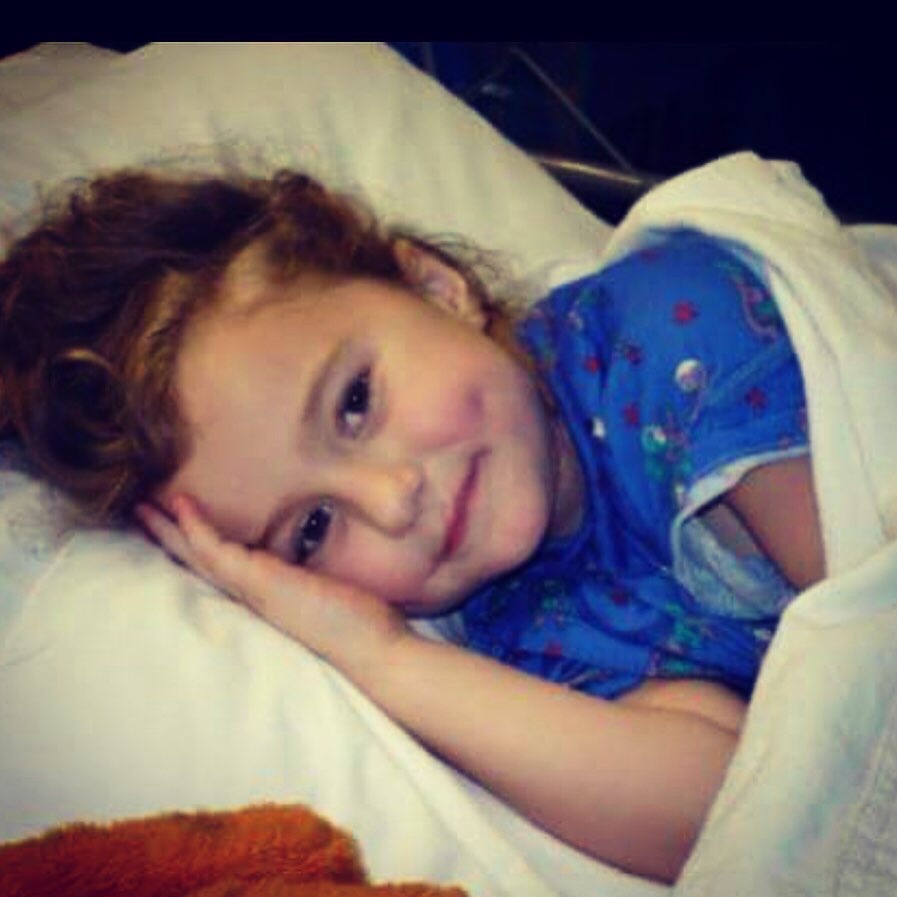
An Untreatable Cancer
On August 2, 2008, oncologists presented the results of Avery’s latest MRI. The tumor had regenerated and “mushroomed,” filling in every possible space in Avery’s brain, and the cancer had developed a resistance to chemotherapy. Doctors warned that continuing chemotherapy would shorten her life span, and put her at risk for infection and other side effects from which she would never recover.
The family was advised to take Avery home and make arrangements with hospice care. In a blog post from Saturday, August 4, Stacy describes how she was anxious to go home, but leaving CHOP felt like the beginning of the end. She kept herself in the room to avoid facing other families and nurses that they had grown so close to. Once again, Avery brought her a moment of comfort when she needed it most:
“About 2am, I woke up to take Avery to the bathroom. When we got settled back in bed, she looked up at me and said ‘don’t worry mommy, when it’s morning time, I promise I’m going to open my eyes and wake up.’ For some reason, I found peace in that and believed her. How could a 4-year-old girl possibly come up with that sentence? She is a most amazing child and it makes it all that much harder to face losing her.”
On August 7, 2008, Avery’s condition worsened. She had difficulty breathing and trouble swallowing, which made it nearly impossible to take most of her medication.
“Thank you, mommy”
Avery continued to struggle into the next morning. Despite the challenges of the day, Stacy was able to still see glimpses of her daughter. Not a child diagnosed with cancer, but just her beautiful daughter, Avery:
“Earlier today when I was rocking her, she kissed my shoulder. Later in the day, she twirled my hair for a few seconds and best of all, around dinner time after she had gotten sick, she opened her eyes and said clearly, ‘Thank you, mommy.’ These are three moments in my life I will never ever forget.”
At 6:45 am on August 8, 2008, Avery died in her mother’s arms, while holding her TigerBear.
Sadly, Avery’s story is one experienced by many childhood cancer patients with hard-to-treat tumors, which is why Stacy is a dedicated advocate for advancing research and drug development for pediatric cancers. When she was told that Avery’s cancer could not be cured, she asked Dr. Peter Phillips, one of her doctor’s at CHOP, if studying the cancer would benefit any research currently being done. He said yes.
Avery’s tumor was examined post-mortem in a study that appeared in the New England Journal of Medicine, which was possible in part due to Avery’s tumor sample.
“Rather than just a statistic, Avery is a permanent rung on the ladder to the cure,” Stacy said.” “For me, it’s one small way I know Avery is still having an impact on this world.”
This summer, Stacy is planning to host a fundraising event to support childhood cancer research projects that are funded by CureSearch for Children’s Cancer.
The CureSearch Impact
CureSearch is accelerating the development of safe, effective treatments for kids like Avery by funding promising research led by innovative investigators around the globe.
We’ve adapted a strong co-funding model and partnered with other childhood cancer foundations, to fund projects that are working to develop new therapies for hard-to-treat tumors.
In addition, we collaborate with leaders from FDA, pharmaceutical and biotechnology companies, and clinical research organizations to evaluate proposed research projects for scientific merit, clinical feasibility and commercialization potential.
With funding from a CureSearch Young Investigator award, Francesca Nazio, PhD, of the Bambino Gesù Children’s Hospital is studying a safer and more effective treatment approach for medulloblastoma. Her project aims to enhance the immune system’s natural ability to fight cancer to treat medulloblastoma, with the goal of disrupting a process in medulloblastoma cells that not only promotes their survival but also enables them to escape anti-tumor immune responses.
Research projects like this wouldn’t be possible without the support from generous donors who share our mission to end childhood cancer. To learn more about how you can support next-generation research, visit https://curesearch.org/donate-to-childrens-cancer-research.

